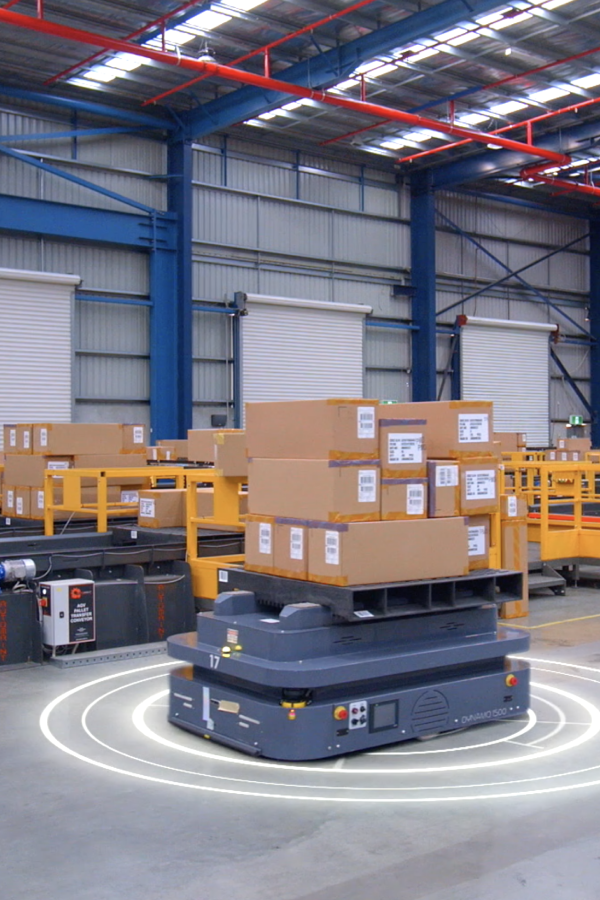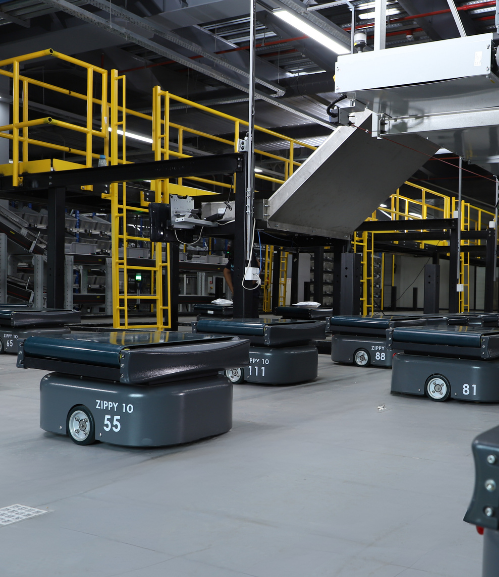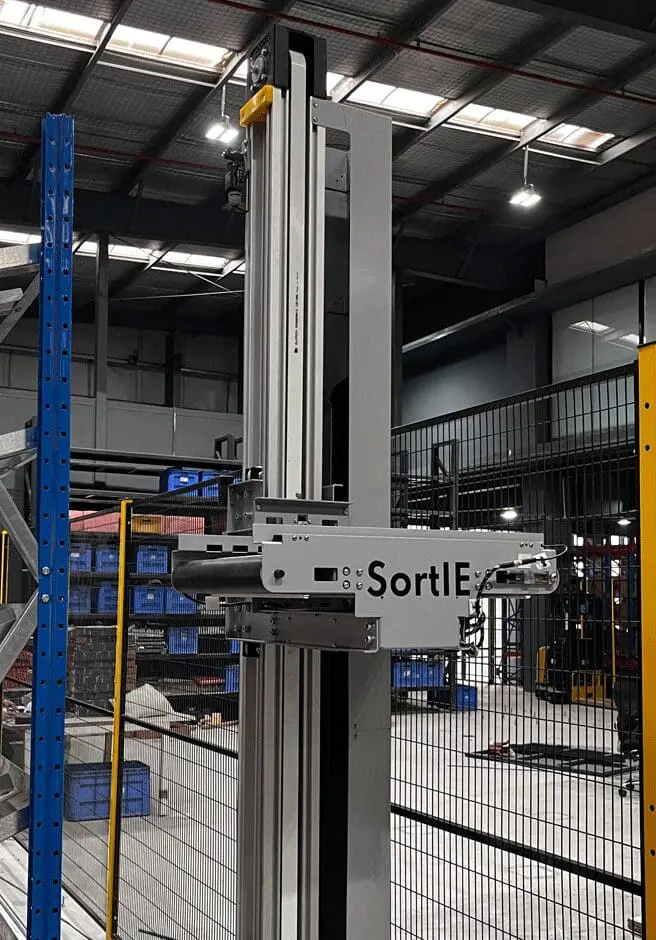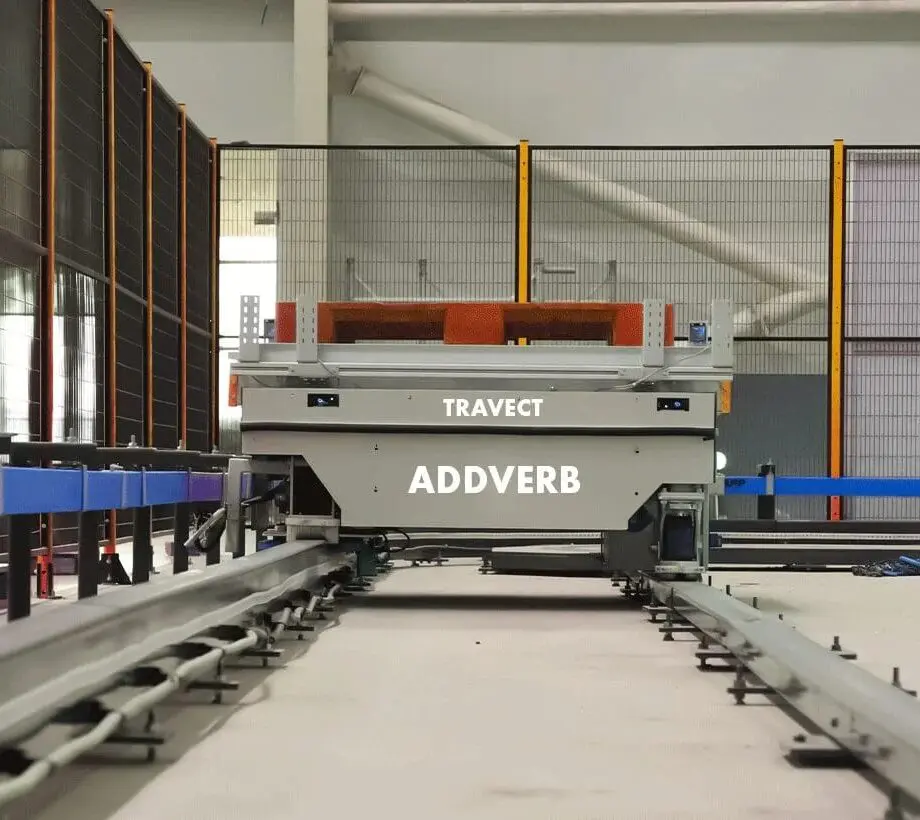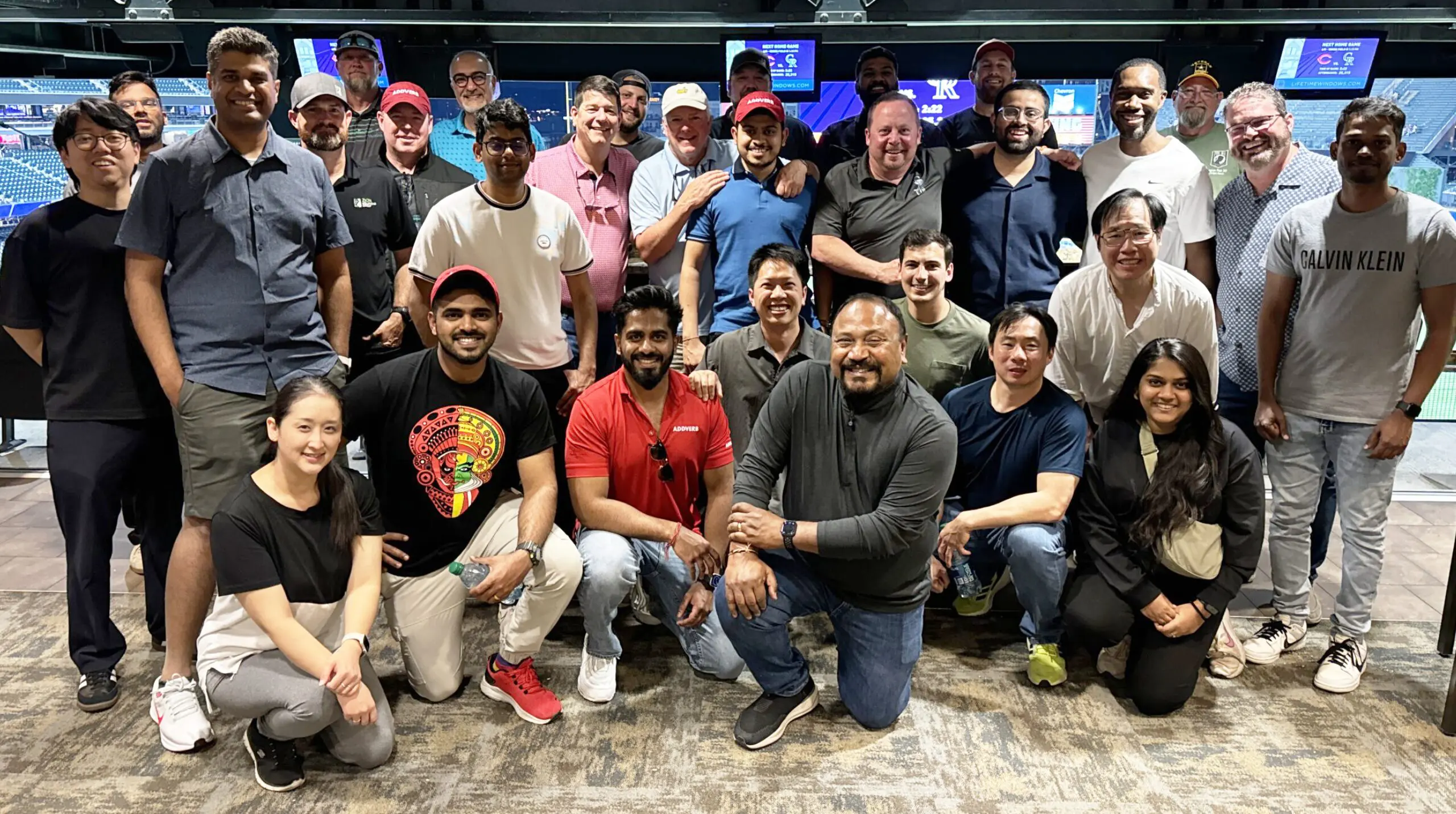Frequently Asked Question
-
What is a mobile robot and how it is controlled?
A mobile robot is an autonomous or minimally human-controlled robot capable of movement and operation in various environments. Equipped with LiDAR’s, cameras, nodes, and software algorithms for navigation and interaction, these robots are controlled through a combination of hardware and software. The hardware includes motors, wheels, and sensors, while the software encompasses algorithms for navigation, mapping, and obstacle avoidance. AMRs such as Dynamo from Addverb revolutionize the supply chain industry by automating tasks like picking and transporting goods in warehouses. They enhance efficiency, flexibility, and productivity, operating 24/7 without breaks and adapting to changing demands. AGVs like Zippy and Veloce excel in sorting and managing reverse logistics efficiently. RGVs contribute to quicker material handling processes.
-
Are mobile robots safe to use around humans? What happens if the robot encounters an obstacle?
Collaborative mobile robots, such as AMRs, AGVs prioritize safety while working alongside humans in dynamic environments. Equipped with safety-rated laser scanning systems, these robots swiftly interpret obstructions, allowing them to reroute or come to a complete halt to avoid collisions.
-
Why choose Addverb for Autonomous Mobile Robots requirements?
Addverb stands out as a top choice for Autonomous Mobile Robots (AMRs) and Automated Guided Vehicle (AGVs) due to its expertise and comprehensive solutions. We offer a variety of options tailored to specific needs, featuring advanced sensor technology and intelligent algorithms. Addverb's MRs are designed to maximize efficiency, boost productivity, and seamlessly integrate into existing workflows. Our commitment to quality, reliability, and customer satisfaction makes them a trusted partner for businesses in search of cutting-edge mobile robot solutions.
-
What are the potential challenges or requirements businesses should consider when implementing mobile robots?
Implementing mobile robots in a business requires careful consideration of several challenges. Initial costs include purchasing robots, setting up infrastructure, and integrating software. Adequate employee training is essential for seamless operation and collaboration with robots. Ongoing maintenance, such as inspections and software updates, is crucial for optimal performance. Businesses must also evaluate impacts on workflows, potential resistance to change, and the need for continuous monitoring and optimization of robotic systems. Addressing these factors helps businesses effectively navigate mobile robot implementation challenges.
-
What complementary solutions are required with mobile robots?
When implementing mobile robots, it's essential to consider the overall application solution beyond just the robots themselves. They typically integrate into a larger framework where Warehouse Management Systems (WMS) and other control systems are crucial. Understanding how mobile robots fit into existing systems ensures seamless operation. For material handling, AMRs often need specialized mounts for lifting pallets or boxes. Having adequate charging stations is also vital, especially for multiple AMRs needing simultaneous charging. These factors contribute to a well-integrated and efficient mobile robot solution.


















